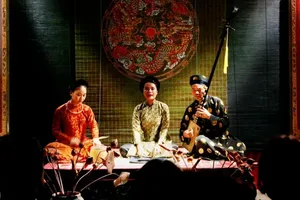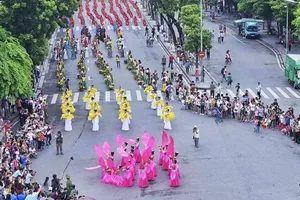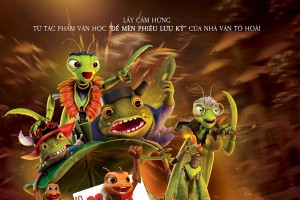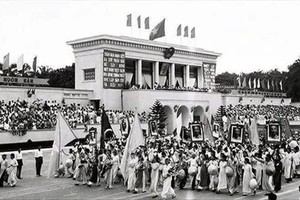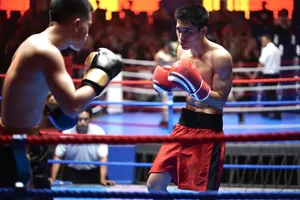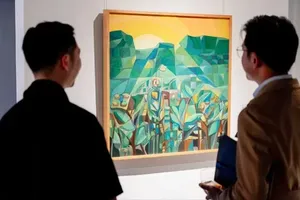As lunar New Year 2009 is the Year of the Buffalo, it will not be inappropriate to sit back and consider how much this zodiacal animal has pervaded the Vietnamese ethos and influenced language and expression.
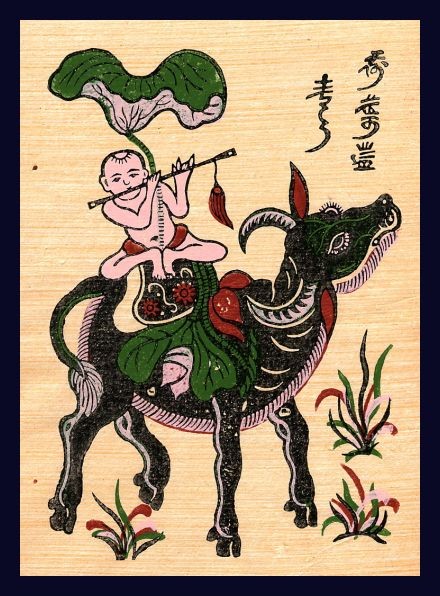
The Viet were traditionally an agricultural people living mainly off wet rice, which of course, constantly needs soft soil to grow. And since time immemorial, the water buffalo has helped farmers with the most physically demanding tasks: tilling the land and towing the harvest. From that starting point, it has come to represent the rustic Vietnamese nature and thus her entire culture.
Though savings have become fancy in the modern era – securities, real estate and the like -- people used to save in the form of buffalos in the past.
Rich families stocked healthy buffalos for trading and tilling. The proverb “con trau la dau co nghiep” (the buffalo is the prerequisite for starting a business) stems from this practice, suggesting this animal was the cornerstone for a prosperous society.
It is not clearly known when the creature was first domesticated but buffalo fossils dating back tens of thousands of years have been found in caves in Lang Son, Hoa Binh Provinces in the north and Ha Tinh in the central region. Bovine bones have also been unearthed in Hai Phong, Hanoi, and Phu Tho. Archeologists think the Viet started to domesticate buffalos 5,000-6,000 years ago.
Clay statues of buffalos are among the earliest artworks ever found in Vietnam, with many sculpted before the Common Era. Today well-off families like to hang buffalo heads and horns on walls as mementos of days past when their ancestors depended so much on these noble animals for survival.
Just as the animal runs deep in the Vietnamese cultural fiber, so do associated festivals: “Le hoi dam trau” (buffalo-stabbing festival) and “le hoi choi trau” (buffalo-fighting festival) are celebrated up to this day, attracting thousands of tourists every year.
As its name suggests, the buffalo-stabbing festival of the Ba Na ethnic group in the Central Highlands sees a sacrificial buffalo tied up and repeatedly stabbed to death after which its meat is offered to the gods and shared among revelers. Meant to celebrate a successful crop, the festival, though considered barbaric and ungrateful in nature by some, is one of the longest surviving in Vietnam, denoting the essence of the Vietnamese culture that centers on the buffalo and regards it as among the most worthy creatures for the gods.
Images of a hapless buffalo tied to the post have been found engraved in many ancient bronze drums.
Up north in Hai Phong, the “buffalo fighting festival” pits one animal against the other before they are all slaughtered for meat.
Myths and history
Most travelers to Hanoi know West Lake (Ho Tay) as an idyllic spot with luxurious restaurants. But few know its former name is Ho Trau Vang, or golden buffalo lake.
Legend has it that after being cursed by a shaman, a golden buffalo ran from its hiding place in the Tien Du mountain of Bac Ninh Province to Hanoi where it stamped its feet and created a big hole. Hence the name.
Besides myths, the creature has its standing in history too.
Prior to becoming king, Dinh Bo Linh used to tend buffalos in the fields. Riding on one, the poor boy played general with other kids in mock battles. It is probably on buffalo backs that the future leader learned his military tactics. He went on to defeat all 12 rival lords to unify the country.
There are other buffalo boys who made their mark, including Dao Duy Tu who became a feared military commander under Lord Nguyen Phuc Nguyen.
King Le Dai Hanh would show off his mighty army of buffalos to awe diplomats from China’s Song dynasty whenever they paid a visit.
The animals were also used as war machines. Drunk and with their tails set on fire, they would be herded en masse into enemy camps where they would set everything on fire.
Of the 15 tribes that made up the Van Lang nation, there was one named Trau, or buffalo.
In art, the buffalo is the most popular animal, with the image of a young boy playing the flute on the back of one being the iconic and idyllic image of rural Vietnam.
Therefore, it is not by chance that this animal managed to find its way into the zodiac.

